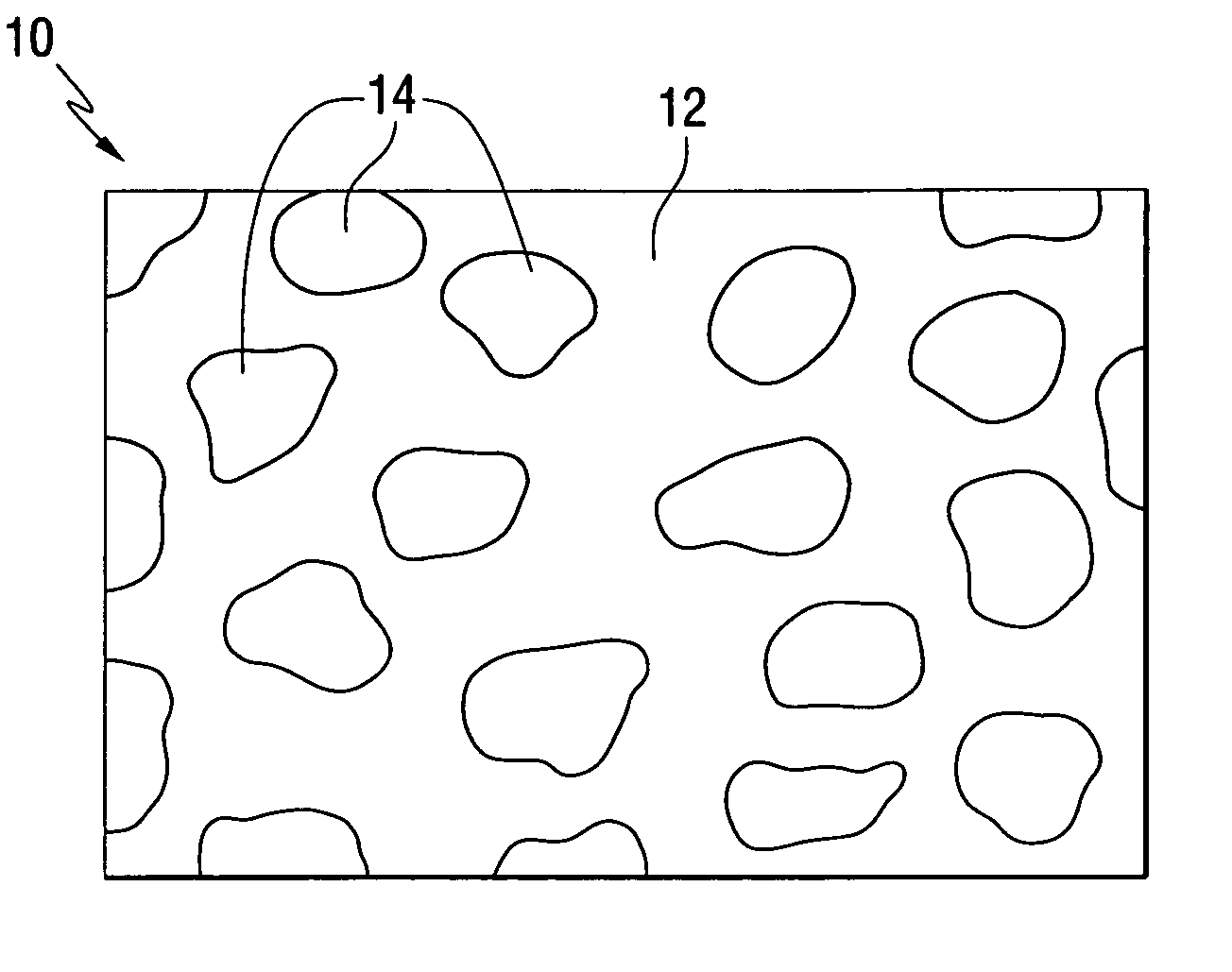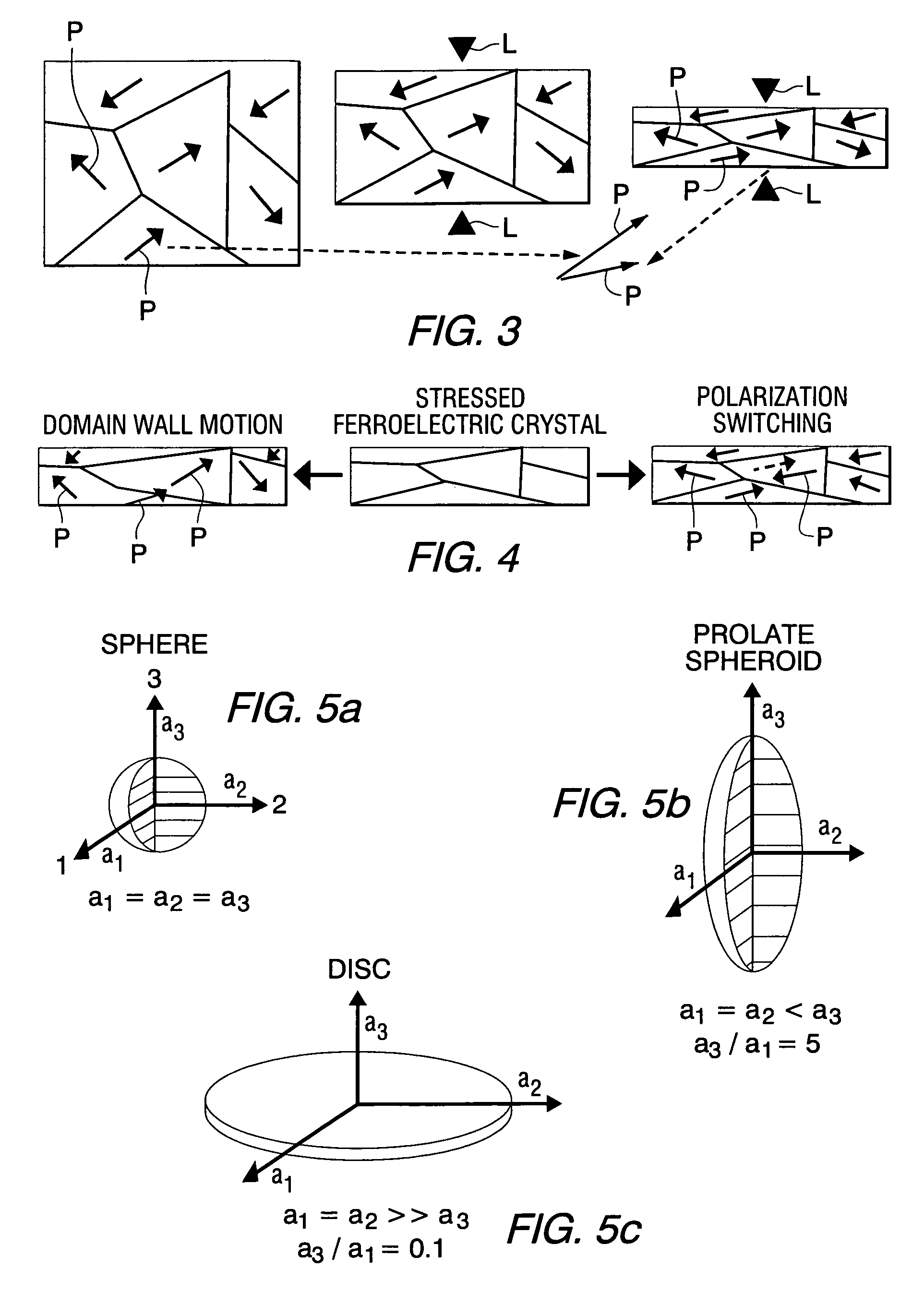Piezoelectric ceramic-reinforced metal matrix composites
a technology of ceramic reinforced metal and composite materials, applied in the direction of generators/motors, instruments, devices, etc., can solve the problems of poor vibration damping characteristics of many materials used in various structural applications, and achieve the effects of high structural strength, improved combination of structural strength and vibration damping, and exceptional passive damping capabilities
- Summary
- Abstract
- Description
- Claims
- Application Information
AI Technical Summary
Benefits of technology
Problems solved by technology
Method used
Image
Examples
example 1
[0042]A composite was made by blending Cu, Sn and BaTiO3, followed by liquid phase sintering at 820° C. for 6 minutes. FIG. 6 is a photomicrograph of the resultant composite material.
example 2
[0043]A composite was made by blending 61.5 w % Ni, 15.4 w % Cr and 22.5w % BaTiO3, mechanical alloying for 24 h, and heat treating at 600° C. for 5 h in argon. The resulting metal matrix composite had a composition of (Ni−20w % Cr)+30v % BaTiO3. FIG. 7 is a photomicrograph of the composite material.
example 3
[0044]Synthesis of a binary piezoelectric compound, ZnO, directly within copper and iron matrices was conducted. Blends of elemental or compound powder precursors were formulated in proportions appropriate to create composites comprised of 20, 25, 30, 40 and 50 volume percent ZnO in copper; and 30, 40, 50 and 60 volume percent ZnO in iron. FIG. 8 is a photomicrograph of the Cu+30 v % ZnO composite material after reaction synthesis.
[0045]The precursor reactants and the intended synthesis reactions assumed to occur were:
(1+x)Cu+Cu2O+Zn→(3+x)Cu+ZnO (1)
(1+x)Fe+Fe3O4+4 Zn→(430 x)Fe+4 ZnO (2)
[0046]In reactions (1) and (2), additional Cu or Fe is added in a proportion appropriate to create the desired composite composition. The blended powders were cold-compacted and reactively synthesized within flowing argon. The synthesis event was initiated within an induction furnace, and proceeded in a self-sustaining fashion to completion.
[0047]Following synthesis, the as-reacted sponge was charac...
PUM
| Property | Measurement | Unit |
|---|---|---|
| volume percent | aaaaa | aaaaa |
| volume percent | aaaaa | aaaaa |
| particle size | aaaaa | aaaaa |
Abstract
Description
Claims
Application Information
 Login to View More
Login to View More - R&D
- Intellectual Property
- Life Sciences
- Materials
- Tech Scout
- Unparalleled Data Quality
- Higher Quality Content
- 60% Fewer Hallucinations
Browse by: Latest US Patents, China's latest patents, Technical Efficacy Thesaurus, Application Domain, Technology Topic, Popular Technical Reports.
© 2025 PatSnap. All rights reserved.Legal|Privacy policy|Modern Slavery Act Transparency Statement|Sitemap|About US| Contact US: help@patsnap.com



